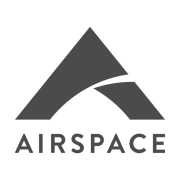Drone Airspace Security solutions provide comprehensive measures to safeguard airspace from unauthorized drone activities. They offer advanced detection and mitigation technologies, ensuring controlled environments remain safe.
The top 5 Drone Airspace Security solutions are STRATUS by WhiteFox, Dedrone, Counter-Drone Systems, HYDRA and Airspace Galaxy, as ranked by PeerSpot users in September 2025. STRATUS by WhiteFox received the highest rating of 0.0 among the leaders and holds the largest mind share of 47.4%. Dedrone is the most popular solution in terms of searches by peers.
These solutions are equipped to detect, track, and intercept rogue drones entering restricted airspaces. They employ radar, radio frequency sensors, and cameras to identify potential threats. Mitigation strategies include jamming, capturing, and redirecting drones, designed to minimize risks posed by unauthorized UAV incursions.
What features define effective Drone Airspace Security solutions?In industries like energy and defense, these solutions play a crucial role in securing sensitive areas. For airports, they help maintain airspace integrity, while in urban settings, they ensure safety during large public gatherings, allowing uninterrupted operations and peace of mind.
For organizations, ensuring airspace security is crucial in mitigating risks associated with drone misuses, safeguarding both assets and personnel against emerging drone threats.
| Product | Market Share (%) |
|---|---|
| STRATUS by WhiteFox | 47.4% |
| Dedrone | 34.2% |
| Counter-Drone Systems | 7.9% |
| Other | 10.5% |






Drone Airspace Security solutions are essential for safeguarding critical infrastructure such as power plants, airports, and governmental buildings. These systems can detect, track, and mitigate unauthorized drones via radar, RF detection, and jamming technologies. By implementing these solutions, you can ensure that only authorized drones access sensitive areas, minimizing the risk of espionage or sabotage.
What are the legal considerations for implementing Drone Airspace Security?When deploying Drone Airspace Security systems, you need to be mindful of local regulations regarding the use of technologies like jamming or intercepting drones. It is crucial to work within legal frameworks to avoid liability issues and ensure compliance with aviation authorities. Consulting with legal experts and staying updated on legislative changes can help you implement security solutions effectively and lawfully.
What technologies are commonly used in Drone Airspace Security solutions?Drone Airspace Security solutions employ a variety of technologies, including radar systems for detecting drones at long ranges, RF sensors for pinpointing the control signals, and visual cameras for identifying drones visually. Some systems also utilize machine learning algorithms to differentiate between threats and non-threats, providing you with a robust framework to manage airspace security and respond to incidents quickly.
Why is real-time data important in Drone Airspace Security?Real-time data is critical in Drone Airspace Security as it allows for immediate detection and response to potential threats. By having access to up-to-date information, you can make informed decisions, deploy countermeasures swiftly, and prevent unauthorized drone activity. This immediacy is vital for protecting sensitive locations where delays could lead to serious security breaches.
How can Drone Airspace Security solutions address the rise of drone swarms?With the increasing threat of drone swarms, Drone Airspace Security solutions have adapted to identify and track multiple drones simultaneously. Advanced algorithms and AI-driven analytics can differentiate between individual drones and assess their behavior patterns. By utilizing these capabilities, you can effectively mitigate the risks posed by coordinated drone activities, ensuring comprehensive security coverage.